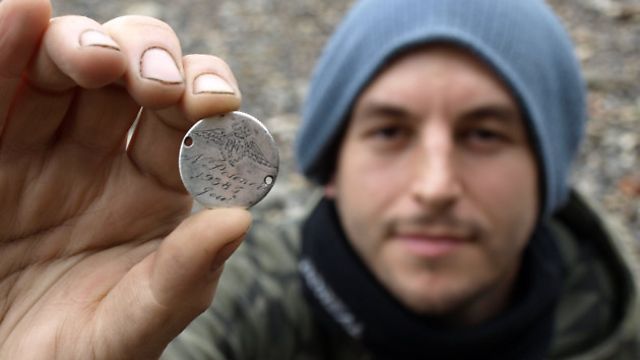A story about one of Simon Bourne’s “finds” that I found interesting
Mudlarker, Simon Bourne, returns Nathan Posener’s RFC dogtag he found in Thames.
Simon was having what he describes as an average day on the foreshore when a fellow mudlarker, Jules, called him over to witness a Dutch coin he had just pulled from the mud.
The two then turned over a slab of concrete, scraped back the sand and discovered a French silver coin with the image of woman—Marrianne, representing Liberty. Two holes had been drilled through, so it had probably been worn on a chain, they assumed.
“The reverse side was polished flat and had an engraving that took my breath away,” Simon recalls.
“It bore a winged logo that read ‘RFC’ - N Posener - 19385 - Jew.

“We were both stunned and excited by the silver coin turned into a military identity tag. The Thames had preserved the inscription well.”
The RFC, or Royal Flying Corps, was the forerunner of the RAF and was created during the 1914-18 Great War.
Simon searched the National Archives which confirmed Posener’s ID number and that he served between 1918 and 1928. The 1911 census had Nathan Posener living at 292 Commercial Road.
“That address was close to where I found his dog tag,” Simon added.
“He and his father were tailors. But what happened to him after that, when war was over?”
The curious mudlarker contacted the East London Advertiser, hoping any relative or old friends might still be in the area.
“I didn’t have to wait long for a response once the story was printed and put online,” he revealed. “The reporter who ran the story phoned me after two weeks saying a reader had recognised the surname Posener. He got in touch with his friend John Silverman, the grandson of Nathan Posener.
“What’s more, his mother, Nathan’s daughter Teresa, was still alive at 90!”
Simon’s year-long mission was over. On a warm summer’s evening, he finally met Nathan Posener’s grandson in north London and returned his dog tag.
“It was a great feeling returning something that had been ‘lost’ for so many years,” Simon admits. “John by chance had spent a year researching his own family tree and the dogtag would take pride of place in his collection of memorabilia.”
Nathan was a Master tailor called up to design and sew the leather and fabric outer membrane of those early flying machines, the family told him.
He served in France on the Western Front which is probably why he used a French Franc for his dogtag that he crafted himself. He had industrial tailoring needles to work with and the creative skills of a Master tailor, perhaps hiring a jeweller to engrave it.
But the mudlarker still wonders how Nathan Posener’s Royal Flying Corp dogtag ended up in the Thames at Limehouse.
“The most romantic theory perhaps is that he threw it in after returning from the war, for whatever reason,” he says.
Nathan survived the Great War and lived to 94. He died in March 1987 in Hampstead where his daughter, now 90, lives today.
The dog tag has gone through a lot, Simon points out, from the battles on the Western Front to Nathan’s home in the Commercial Road, then churned around in the Thames mud for 90 years.
But returning it ‘home’ is something he appreciates few mudlarking ‘treasure hunters’ ever get the chance to do.
Full story with photos here
[Mudlarker Simon returns Nathan Posener’s RFC dogtag he found in Thames | East London Advertiser]



